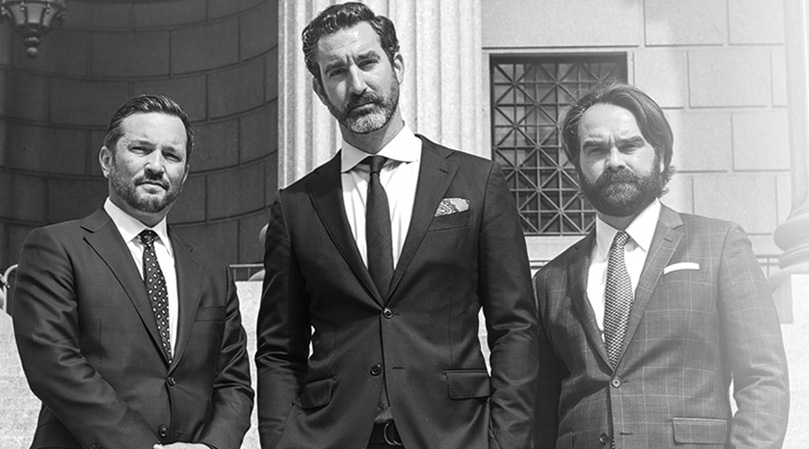Arrest Process
New York’s Arrest Process
Under New York state law, a person can be placed under arrest whenever the police have reasonable cause that a person committed a crime. At that point, the police have the legal right to restrain someone and charge him or her.
Contact Konta Georges & Buza P.C. to fight charges with a proven criminal defense attorney. Our firm’s partners have obtained results that are unmatched by competitors. They will aggressively defend your interests in and out of the courtroom, tirelessly advocating for you from Day One.
If you have been arrested or are worried that you will be arrested, call 212-710-5166 for a free consultation with an experienced criminal defense lawyer. Our team serves New York’s five boroughs.
Search And Seizure
The first thing that happens when the police make an arrest is they search the person who is subject to that arrest. While individuals in the United States generally have a right to be free from searches and seizures of their person without a warrant, there is an exception to that right that occurs after a person is lawfully placed under arrest. This is so the police can ensure the suspect does not have a weapon.
Usually, when a person is arrested on the street, they will be patted down for weapons near where he or she is arrested. Afterward, they will be taken via a police car to the precinct where the first part of processing occurs.
Processing
During processing, the property that the person had on him at the time of his arrest is seized and cataloged. The reason for this is because an arrestee does not have the right to take any property with them other than the clothes on their backs. The confiscated items are “vouchered” usually either as “arrest evidence” or as “safekeeping.”
- Arrest evidence: Evidence that the government intends to use against you. For example, if a person is arrested for committing a robbery, and he is found with the proceeds of the robbery and the knife used in the robbery, then that evidence is going to be used against him in the prosecution for robbery.
- Safekeeping: Items such as your keys and wallet are probably not going to be used against you, so that will be vouchered as “safekeeping.” Arrestees can get safekeeping items back once the arrest is over.
Questioning And Your Right To Remain Silent
While at the precinct, the police will then take the basic information regarding the arrestee, including name and address. They will also take fingerprints and a mug shot. Other than asking for this basic pedigree information, however, the police do not have the right to ask questions of the person without giving them their Miranda rights. If they fail to do this, then anything the arrestee says will be suppressed.
Once a person requests a lawyer, the police may no longer question the person about anything other than their basic information. It is important to remember that a person can and should request a lawyer immediately. At that point, the police may not ask any nonpedigree questions of the arrestee.
The Arraignment
After processing, the police have a duty to make the defendant available for his or her arraignment. An arraignment is the beginning stage of a criminal case against the person.
In New York, the arraignment is when the person has the right to have a lawyer present, to have the charges and his rights formally read to him and to have an opportunity to plead guilty or not guilty. The police will make a decision as to whether to give the person a Desk Appearance Ticket (DAT) or take the person to court directly for their arraignment.
A DAT is essentially an order to report to the court on a particular date in the future for arraignment. If the police elect not to give a person a DAT, then they have to be arraigned within 24 hours of the arrest. The defendant then awaits their arraignment in central booking near the courthouse. While the defendant is in central booking, the police will then discuss the facts of the case and the appropriate charges with the office of the district attorney (DA).
The Plea Process
If the charge is a misdemeanor, the defendant will be brought before the judge and plead guilty or not guilty. If they plead guilty, the case is over. However, if they plead not guilty, then the court will determine whether bail is appropriate.
For a felony, the person does not enter a plea. Instead, the court simply entertains bail and the case then gets adjourned for grand jury action. If the court sets bail and the person cannot make bail, then the DA’s office must provide non-hearsay evidence to the court within six days that establishes the probable cause for the crime. If they fail to do this, then the person must be released from custody. Once evidence is presented, the case proceeds to motion practice and, eventually, trial.
Don’t Wait To Seek Counsel
Being arrested is a serious and traumatic ordeal in a person’s life. If you or a loved one is placed under arrest, call 212-710-5166 to arrange a free consultation with an experienced attorney immediately.
Our lawyers have handled thousands of cases, and their records of success are astounding. Our partners have had innumerable dismissals, acquittals and favorable dispositions. We are available 24/7 for arraignments. Don’t hesitate to contact us.

Request Your Free Consultation
Fields Marked With An “ * ” Are Required
"*" indicates required fields
The Woolworth Building
233 Broadway
Suite 900
New York, NY 10279

